The Loss of the Sacred
There are several ways to define modernism. One way is this: modernism was an attempt to remove the sacred from society and to replace it with a mechanistic naturalism. Everything was to be understood and explained in scientific terms.
The late philosopher of religion Mircea Eliade wrote this:
The completely profane world, the wholly desacralized cosmos [that is, the cosmos with the sacred removed] is a recent discovery in the history of the human spirit . . . desacralization pervades the entire experience of the nonreligious man of modern societies.{1}
Profane, here, is another word for secular. It is contrasted with sacred. My Oxford English Dictionary defines sacred as “connected with God or a god or dedicated to a religious purpose and so deserving veneration.” It is closely related to sanctified which means “holy” which means “dedicated or consecrated to God.”{2}
Ours is obviously a secular society. Everything open for public discussion is to be explained with no reference to the sacred; there is no acknowledged connection to God. It seems the only time the sacred makes it into the news is when there is a tragedy and reporters talk about people praying, or when a famous religious person, such as the Pope, dies.
Once upon a time in the West, our society operated as though God mattered. Now, such views are considered quaint relics of the past which shouldn’t be allowed to invade the public square. The late Christopher Reeve in a speech about stem cell research at Yale University said that “our government should not be influenced by any religion when matters of public policy are being debated.”{3} Religion is to be a private affair only.
The late theologian and missionary Lesslie Newbigin, after spending four decades in India, said this about the West:
The sharp line which modern Western culture has drawn between religious affairs and secular affairs is itself one of the most significant peculiarities of our culture, and would be incomprehensible to the vast majority of people.{4}
Why should this matter to us? Among other reasons is the simple unfairness in a democracy of “religious people” not being able to bring their worldviews into public debates while the nonreligious can. I can think of two explanations for this idea. First, it’s thought that religion necessarily creates unreasonable bias whereas irreligion doesn’t. Religious belief removes our ability to be objective, it is thought. People who think this way need to catch up with current philosophy! There are no value-free facts, and no perspectives that do not begin with unprovable assumptions.{5}
Second, it’s thought that religious biases are likely to be destructive because of their “intolerant” character. This is a popular mantra today; it is trotted out with all the authority of unassailable fact. Didn’t the events of 9/11 prove it? Responding to the observation that people see those horrible events as illustrating what religious monotheism causes, writer Os Guinness noted that “In the last century, more people were killed by secularist intellectuals, in the name of secularist ideologies, than in all the religious persecutions and repressions in Western history combined.”{6} If the twentieth century is a good witness, there is greater danger from secular powers than from religious ones.
Beyond that, though, is a problem Christians have individually and corporately. When so much of our time is spent in a realm in which our Christian beliefs aren’t welcomed, we begin to forget their importance for all of life. So we start thinking from a secular perspective. In addition, we even find it easier to let our Christian beliefs be shaped by non-Christian thinking.
In her latest book, Total Truth,{7} Nancy Pearcey has reminded us of the importance of destroying the divide between the sacred and the secular in our thinking. But it can’t stop with our thinking; the sacred needs to be an integral part of our lives. As part of that process it would be good to be reminded of just what we mean by the sacred.
Sacredness
As noted earlier, sacred means to be dedicated or devoted to God. It involves a separation of purpose: something is separated from the use of the world for the use of God.
The idea of sacredness is reflected in a number of ways in the various religions of the world. There are holy books and places and festivals. The sacred is reflected in religious architecture. Islamic mosques, for example, are designed to point people to Allah. Muslim writer Hwaa Irfan speaks of “sacred geometry [which] is the science of creating a space, writing or other artwork, which reminds one of the greatness of Allah.”{8} In the past, Christianity too, of course, was conscious of the sacred in its architecture. Medieval era churches were built for the purpose of “signifying the sacred,” of reflecting something about God. The furnishings of churches were designed to aid in this focus.
Old Testament
What does the Bible tell us about sacredness or holiness?{9} In the Old Testament it refers primarily to God. “Holy, holy, holy is the Lord of hosts” Isaiah said (6:3). In Old Testament times, God showed Himself to be set apart from His created order through such events as Moses being told to remove his shoes before the burning bush because he was standing on holy ground (Ex. 3:5). Later, at Sinai, God called Moses up onto a mountain to teach him His laws, far away from the people signifying His separateness from a fallen world (Ex. 19). His separation from unclean things was reflected also through His laws (e.g., Lev. 11:43, 44). Anyone who would approach God, who would “ascend His holy hill,” according to the Psalmist, must have “clean hands and a pure heart” (24:4).
The word holy was applied to other things that were separated by God, such as the nation of Israel (Ex. 19:6; Lev. 20:26), the Sabbath (Ex. 16:23), the tabernacle with both the Holy Place and the Most Holy Place (Ex. 26:33), and the various feasts and special observations, such as the Day of Atonement (Ex. 30:10). This even extended to objects used for worship. For example, there was special incense that was too holy to be used by people for themselves (Ex. 30:37). In the Old Testament, then, we find God using things and events to teach His people about His holy nature.
New Testament
What do we find in the New Testament? Again, the primary reference is to God. All three members of the Trinity are said to be holy. Peter repeated God’s admonition recorded in Lev. 11:44—“Be holy because I am holy” (1 Pet. 1:16). He called Jesus “the Holy One of God” (Jn. 6:69). And, of course, the Spirit is called the Holy Spirit (e.g., Lk. 2:26).
Whereas in the Old Testament, God’s separateness from creation and the unclean was the emphasis, in the New Testament the moral dimension comes to the fore (although the moral wasn’t absent from the Old Testament). In the Old Testament the concern is more with external matters; in the New Testament the focus is on the internal. The writer of Hebrews says we were “made holy through the sacrifice of the body of Jesus Christ once for all” (10:10). This doesn’t mean we’ve fully “arrived” in our personal sanctification. Paul says we’re to “purify ourselves from everything that contaminates body and spirit, perfecting holiness out of reverence for God” (2 Cor. 7:1). The shift in emphasis between Testaments doesn’t indicate a change in the meaning of holiness or its importance. For example, God’s people are called saints—holy ones or sanctified ones—in both Testaments (e.g., Ps. 34:9; Acts 9:13). However, in the Old Testament times, God used external matters, which could be seen, to teach about the inward change He desired.
Does this mean that we no longer think about events and physical things as holy as in the Old Testament? Certainly not in the same way Old Testament saints did. We no longer have the Temple and the sacrificial system and the Aaronic priesthood. All things are God’s, and all things are to be offered up to Him with a pure heart. There should be no sacred/secular split in the sense that some things are under God’s jurisdiction and some aren’t. However, we might find that, just like the Israelites, certain items or observances might help in directing us to God or reminding us of His character.
Secularism—The Loss of the Sacred
Contrasted with sacred is the idea of secular. The root of the word “secular” is interesting. It comes from a Latin word that means “time.” James Hitchcock says “to call someone secular means that he is completely time-bound, totally a child of his age, a creature of history, with no vision of eternity. Unable to see anything in the perspective of eternity, he cannot believe that God exists or acts in human affairs.”{10} A secular society, then, is one which is tied to time, to the temporal, with no reference to the eternal, to God.
We shouldn’t think that there was no distinction between the sacred and the secular in the West until modern times. In the Medieval era, there was secular music and poetry. However, there was an increasing turn to the secular following the religious upheavals of the sixteenth century. By the eighteenth century writers such as Voltaire were openly espousing secularism. If religion was the cause of such terrible things as the wars of the sixteenth century, it should be removed from the public square.
Over time, secularism gradually encroached on almost all areas of human life. In the university in the nineteenth century, a movement began to remove religion from its central place in education and segregate it to its own department. In the workplace, efficiency became a watchword; because religion could disrupt the workplace, it was to be left at home. By the twentieth century buildings and art and law and . . . well, you name it; all areas of human life were now to be thought of in secular terms and developed according to the methods of science. Life would be much improved, it was thought, if we were freed from the narrowness of religion to make of ourselves what we would. Humanism was the fundamental worldview, and secular humanism at that. The name given to this era was “modernism.”
What has this gotten us as a society? We’re free to construct our reality any way we wish now that God is supposedly dead. But what have we done with our freedom? Henry Grunwald, former ambassador to Austria and editor-in-chief of Time, Inc. said this:
Secular humanism . . .stubbornly insisted that morality need not be based on the supernatural. But it gradually became clear that ethics without the sanction of some higher authority simply were not compelling. The ultimate irony, or perhaps tragedy, is that secularism has not led to humanism. We have gradually dissolved—deconstructed—the human being into a bundle of reflexes, impulses, neuroses, nerve endings. The great religious heresy used to be making man the measure of all things; but we have come close to making man the measure of nothing.{11}
What the Loss of the Sacred Means for Us
Life in a secular world
What does it mean to live in a secular society? How does it color our Christian experience? How does it affect the way we make decisions? The way we spend our money and time? The way we relate to people?
In 1998, Craig Gay published a book titled The Way of the Modern World: Or, Why It’s Temping to Live As if God Doesn’t Exist.{12} In the introduction, he addresses the question why there needs to be another book on modernism. He gives a couple of reasons. First, he says, is the possibility of unfruitfulness. He points to the Parable of the Sower in Matthew as a biblical example. Could any ineffectiveness on our part or the part of our churches be traced back to accommodation to the secular mind? Could our many church programs and strategies be found wanting because we are using modern methods which run counter to the ways of God? Our private lives have become divided: Monday through Friday are for money-making endeavors; Saturday is for working around the house or going to the lake; Sunday is for religion. We live bifurcated lives.
Second is “the threat of apostasy and spiritual death.” Think of the proverbial frog in the pot of water slowly coming to a boil, and then think about how easy it is to adopt the notion that “you only go around once” and the modernistic solution of getting all the “toys” we can while we can . . . and gradually not only look like the world but become card-carrying members of it.
The sacred brought down to the secular
The late Francis Schaeffer taught many of us the meaning and significance of “secular humanism,” and, as a result of such teaching, evangelicals have taken on the project of integrating the sacred and the secular in more and more areas of their lives. Much of this has been good. Determining to let one’s Christian beliefs inform all aspects of life is hard in itself; in a secular culture that doesn’t care for such things, it’s a major challenge. As noted earlier, it is an uphill battle living as a Christian in our secular society, so one should be cautious about criticizing the sincere efforts of fellow believers.
In my opinion, however, some or many of us have unconsciously pulled a “switcheroo.” In our efforts to tear down the divide between sacred and secular, we have been guilty to a significant extent of bringing the sacred down to the secular rather lifting all of life up to the secular, as it were. We live so much of our lives in the “lower story” as Nancy Pearcey calls it (following Schaeffer) that we have simply baptized as Christian attitudes and ways of life that are questionable. We’ve secularized the sacred rather than vice versa.
Ask yourself this: Besides things internal to you—attitudes, beliefs, etc.—what externals in your life clearly reflect the divine? How does the sacred color your life? What habits of life, objects or tools, what signifiers of the sacred, are part of your life?
Restoring the Sacred, Not the Sacred-Secular Split
In so far as this describes us, we need to make the conscious decision to bring about change. The first order of business is to re-acknowledge the sacredness of God. Then we must recognize that we are sanctified, set apart. We are to be drawn up to God, and one significant area in which this should be seen is in worship. Think of worship as the sanctified being drawn up to the Sanctifier. In another place I wrote this:
The object of one’s worship reflects back on the worshipper. Those who worship things lower than themselves end up demeaning themselves, being brought down to the level of their object of worship. But those who worship things higher are drawn up to reflect their object of worship. To worship God is to be drawn up to our full height, so to speak. We are ennobled by worshipping the most noble One.{13}
Two thoughts to add which might seem contradictory at first. In response to the secularization of our society, it is our responsibility to bring God back into all the affairs of our lives, even the mundane. In our private lives that will be easier to do than in our public lives simply because we don’t set all the rules for the latter. For example, a person working for a financial institution probably won’t be able to insist that the boss leads the office in prayer before work each morning. However, there are ways we can bring a Christian view of the world and godly morality into the workplace. We want God to be over the full sweep of our lives such that we don’t have a brick wall dividing our lives in two.
Along with that, however, we might find it helpful to bring into our lives some kinds of signifiers of the sacred, some kinds of objects or places or routines or something that will provide reminders to us that the world we see isn’t all there is. Christians have used symbols for ages to remind them of the “otherness” of God. Art has made a big comeback in recent decades as a means of portraying truths about God and a Christian view of life and the world. Such things aren’t prescribed in Scripture. What is prescribed, of course, is the rejection of idolatry. Therefore, anything we use as an aid must remain just that—an aid, not the object of our faith.
Thomas Molnar argues that a strong Christian belief in the supernatural needs worship symbols such as prayer, ritual, a sense of the sacred community, sincere piety, and the élan (enthusiastic energy) of the clergy.”{14} He believes that the only way the church can remain strong in a pagan environment is to “remain unquestionably loyal” to both the intellectual component—doctrine—and the sacred component which employs symbolic forms.{15} The intellectual component gives us an understanding of our faith and our world. By being renewed, it enables us to “test and approve what God’s will is” (Rom. 12:2). The symbolic component can help us focus on and learn about God. Things like visual aids, postures, particular times set aside for a focus on God, along with Bible reading and prayer, can be very beneficial, as long as they don’t lead to idolatry or a diminished or altered view of God.
We don’t have the law with all its stipulations about the Temple and its furnishings, sacrifices, and special feasts. In my opinion, however, to simply set all such things aside because they aren’t required by law is short-sighted. Human nature hasn’t changed; if sacred signifiers were helpful to the Israelites, maybe they would be to us, too.
To give people a list of things to do that goes beyond clear scriptural exhortation to such practices as prayer, learning God’s Word, gathering together as a body, and participating in the sacraments or ordinances would be to overstep our boundaries. The most I can do, then, is ask you think about it. Consider how you can restore a clear sense of the sacred in your life. Not just any sacredness per se, of course, but a sense of the presence of the One who is truly sacred and of the significance of the sacred for how you live.
Notes
1. Mircea Eliade, The Sacred and the Profane: The Nature of Religion (New York: Harper and Row, 1961), 13.
2. The Pop-up New Oxford Dictionary of English, Selectsoft Publishing, 1992.
3. Christopher Reeve, “Stem Cells and Public Policy” Yale University, April 3, 2003. Accessed from www.yale.edu/opa/v31.n25/story7.html on 4/6/2005. The offending statement was reported in Mitch Horowitz, “Ambassador of the Miraculous” on Horowitz’ Web site at www.mitchhorowitz.com/christopher-reeve.html (Accessed 4/6/2005).
4. Lesslie Newbigin, The Gospel in a Pluralist Society (Grand Rapids: Eerdmans, 1986), 31.
5. Thomas Kuhn got the ball rolling with respect to science, the supposed bastion of objectivity, with his book The Structure of Scientific Revolutions, 2nd ed (Chicago: Univ. of Chicago Press, 1970; first published in 1962). For philosophical treatments see Arthur F. Holmes, Fact, Value, and God (Grand Rapids: Eerdmans, 1997); Thomas Nagel, The View from Nowhere (New York: Oxford Univ. Press, 1986); and Hilary Putnam, The Collapse of the Fact/Value Dichotomy and Other Essays (Cambridge, Mass.: Harvard Univ. Press, 2002).
6. Mary A. Jacobs, “Q&A With Os Guinness: Standing in Defense of ‘One True God’,” Dallas Morning News, March 26, 2005.
7. Nancy Pearcey, Total Truth: Liberating Christianity from Its Cultural Captivity (Wheaton: Crossway Books, 2004).
8. Hwaa Irfan, “Sacred Geometry of Islamic Mosques,” Islamonline.net www.islamonline.net/English/Science/2002/07/article02.shtml, accessed 4/7/2005.
9. I am indebted for much of what follows to Walter A. Elwell, ed., Baker Theological Dictionary of the Bible (Grand Rapids: Baker, 1996), s.v., “Holiness.”
10. James Hitchcock, What Is Secular Humanism? Why Humanism Became Secular, and How It Is Changing Our World (Ann Arbor, Mich.: Servant Books, 1982), 10-11. I highly recommend this book for a history of secular humanism through the 1970s.
11. Henry Grunwald, “The Year 2000,” Time, March 30, 1992, 75, quoted in Garber, 54.
12. Craig Gay, The Way of the Modern World: Or, Why It’s Temping to Live As if God Doesn’t Exist (Grand Rapids: Eerdmans, 1998).
13. Rick Wade, “Christianity: The True Humanism” Probe Ministries, 2000. Available on the Web at www.probe.org/christianity-the-true-humanism/.
14. Thomas Molnar, The Pagan Temptation (Grand Rapids: Eerdmans, 1987), 79.
© 2005 Probe Ministries

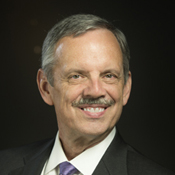

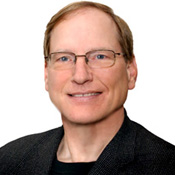
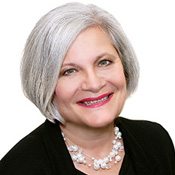




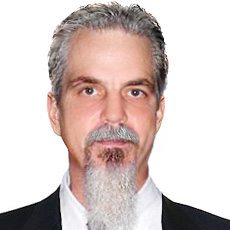
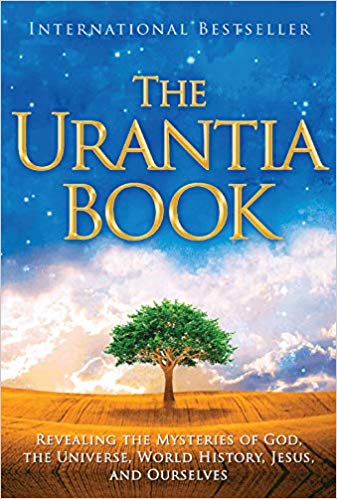 Not long ago a woman wrote to me about a very painful episode in her life. About fifteen years ago her husband embarked on a spiritual quest that ultimately destroyed their marriage and family. He began reading The Urantia Book, a massive tome of 2,097 pages that was allegedly revealed by celestial beings from higher universes. He also became involved in various occult practices such as channeling and astral projection. Eventually, she and her husband divorced, leaving both her and her children hurt and confused.
Not long ago a woman wrote to me about a very painful episode in her life. About fifteen years ago her husband embarked on a spiritual quest that ultimately destroyed their marriage and family. He began reading The Urantia Book, a massive tome of 2,097 pages that was allegedly revealed by celestial beings from higher universes. He also became involved in various occult practices such as channeling and astral projection. Eventually, she and her husband divorced, leaving both her and her children hurt and confused.